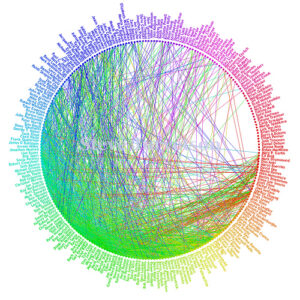 Check out this great interview with Andrew McAfee of MIT’s Center for Digital Business on how to talk to CEOs about social media. He’s got some great tips (like why you shouldn’t use the word “social”…interesting), but what I like most was his conversation about “weak ties.”
Check out this great interview with Andrew McAfee of MIT’s Center for Digital Business on how to talk to CEOs about social media. He’s got some great tips (like why you shouldn’t use the word “social”…interesting), but what I like most was his conversation about “weak ties.”
When he talks to CEOs about social media (or “Enterprise 2.0” in his lexicon), he gets push back because social media is percieved as a waste of time. Just look at all the time employees are spending doing “personal” business on Facebook, Twitter, etc. McAfee combats this by explaining the concept of weak ties.
There is a huge amount of work in sociology, really beautiful work, that shows, especially if you want innovation and novelty, or introductions to other social networks, that your weak ties are a better place to go than your strong ties. Your weak-tie network is an extremely valuable thing for you. The problem is that before the 2.0 era, we had terrible tools for building and maintaining and exploiting a network of weak ties.
It’s interesting. We tend to have a fairly black and white view of “relationships.” We either have them or we don’t. But in today’s world, we need to re-think the idea of relationship building to incorporate the idea of networks. It’s not just building relationships with individual people. We have to understand our whole network and how it is maintained. Some people in that network are very strong ties, and others are weak. I doubt there will ever be a black-and-white rule about which individuals should be strong ties and which should be weak, but at the NETWORK level, we need to maintain both sets of groups (and probably more weak ties than strong ones). And we do this because it enables us (and, by extension, our organizations) to be more effective.
I will be writing more about this, by the way, when I finish reading Social Gravity, by Joe Gerstandt and Jason Lauritsen.

There’s a really great book about this subject called Superconnect, by Richard Koch and Greg Lockwood. The authors pointed out that cities have always been hotbeds of innovation BECAUSE of all the weak links – and the same concept certainly seems to apply to social media.